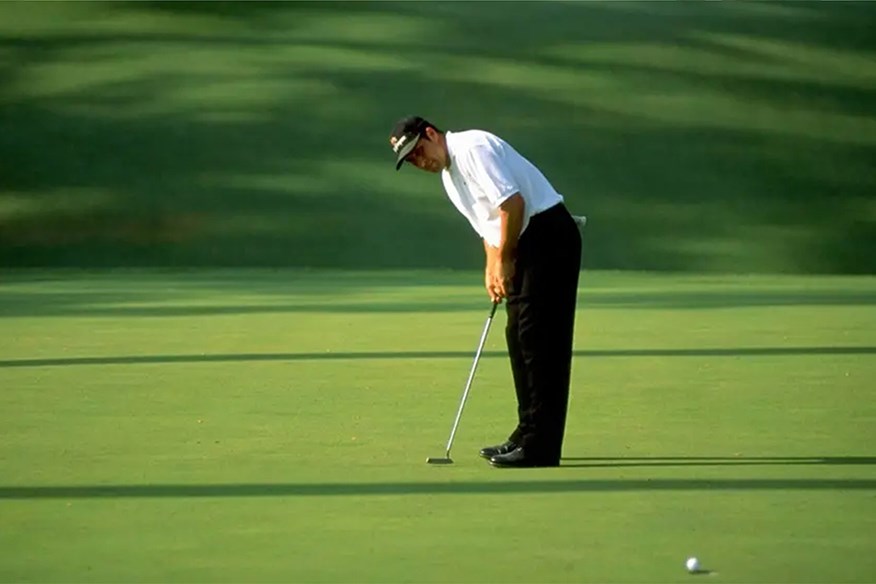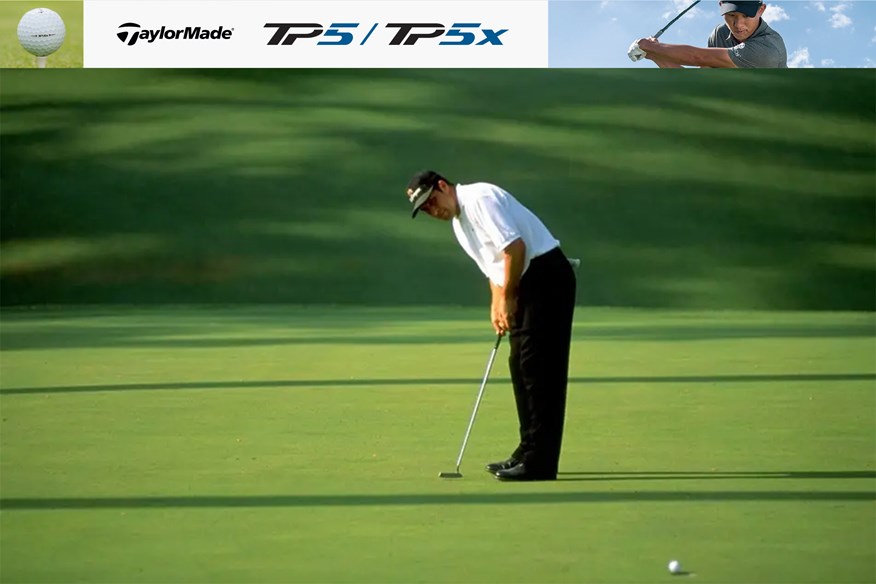Jose Maria Olazabal: “I thought I’d never walk again before Masters win”
Published:
Jose Maria Olazabal reflects on the highs and lows of his 1994 and 1999 Masters tournament victories at Augusta National Golf Club.
In 1994 a 28-year-old Jose Maria Olazabal broke through for his maiden Major title at Augusta National, and it looked to be the start of many more. But the very next year he was forced to take an extended spell away from the game as a problem with his foot rendered him unable to walk.
Olazabal’s return in 1997, and his subsequent second Masters title in 1999 was a comeback story many could not have predicted for the Spaniard. Here, the Ryder Cup great shares his memories of those two triumphs at Augusta National with us.
The first is a story of relief, of what it took, and what it meant, for him to finally achieve his dream. The second is undoubtedly a story of triumph, of getting back to a place he hadn’t thought possible, and of the jubilation he felt earning that Green Jacket for a second time.
Masters 1994: ‘Seve himself writing a note, it was so special, it will always be with me for the rest of my life’
When Jose Maria Olazabal arrived at the 1994 Masters, expectations were high for the Spaniard. A runner-up finish in 1991 had been followed by a top 10 at Augusta National in 1993, and his form heading in to the event couldn’t have been better:
The 18- time Tour winner had claimed the Open Mediterrania in March and finished second in the week before the Masters. But Olazabal unexpectedly struggled, opening with a dropped shot and signing for a two-over 74, putting him six shots behind first round leader Larry Mize…
“I didn’t start well,” Olazabal recalls. “After the first round I was really a bit annoyed with myself in the sense that I was playing well coming to the event and I didn’t play particularly well that first round. Usually when I finish the round I go to the driving range or to practise a bit to loosen up… I was quite upset with myself and actually didn’t even practise at all, I went back to the house.”
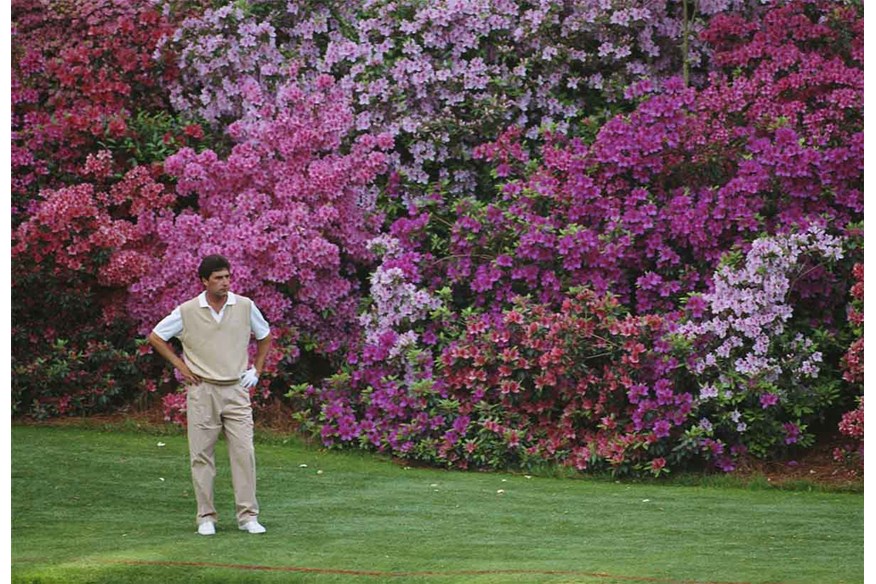
By the time he made it to the tee box for his second round, expectations – including his own – had dissipated, but a five-under 67 put him firmly back in contention.
“I didn’t have many expectations after what happened the first day, but everything seemed to flow and I started to feel more comfortable, the same way I was playing in the weeks before coming to Augusta.”
After a third round 69, Olazabal had moved in to second place and had a real chance to win his maiden Major title, sitting just one shot behind Tom Lehman. It made for a restless night’s sleep, and those nerves continued to keep a firm hold of him in the morning.
THE MASTERS: Revealed: Who will win the 2024 Masters?
“I didn’t sleep well the night prior to the final. It was the second time I had the chance to win the Masters and my head was working really hard, I was just trying to picture the golf course, the shots I wanted to hit. I didn’t have breakfast. I couldn’t get any food through on the Sunday morning, it was impossible for me. I tried, but I couldn’t.”
By the time Olazabal made it to the golf club, he tried again, ordering a sandwich and some milk. The food once more went uneaten, and he decided to go outside and take in the occasion from a bench outside the locker room.
“I spent a good half an hour sitting on that bench facing the 1st tee, seeing the groups teeing off without saying a word, just enjoying the moment, the atmosphere, the announcer on the tee. When it was time to start my warm up I looked at Sergio (Gomez, his manager) and said ‘this is amazing, this is an amazing moment, to be here, to see all those past champions teeing off with this atmosphere’.”
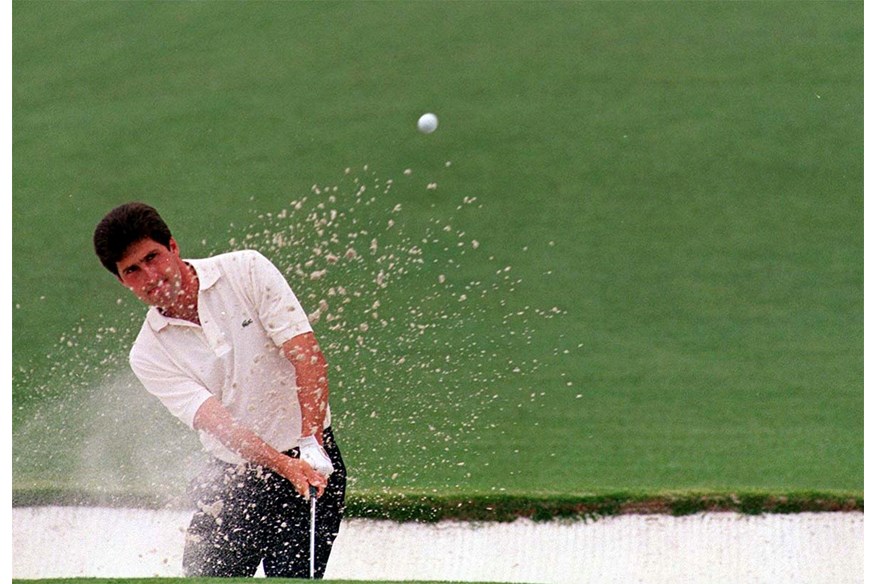
What he didn’t anticipate was that when he opened his locker on that Sunday, there’d be a note of encouragement inside from his close friend, Seve Ballesteros. He read it, put it back in his locker and left it there, showing no one. It would later become the influence behind his decision to message Sergio Garcia before his own Masters victory in 2017.
“It was a special moment,” Olazabal told TG when describing the moment he found the note. “Everybody knows my relationship with Seve, but to have that note in the locker, especially when you don’t expect it at all. You get up there, and there is a piece of paper saying ‘stay calm, let your game do the talking, you have the game to win it.’
“It made me feel great. Seve himself writing a note, it was so special – it will always be with me for the rest of my life.”
THE MASTERS: 2008 champion Trevor Immelman on beating Tiger and his injury heartbreak
Afterwards, Olazabal went through his regular practice routine, trying fruitlessly to calm the nerves that left him shaking on the 1st tee.
“On the 1st tee especially I had a lot of butterflies in my stomach. I remember teeing the ball up and my hand was shaking quite a bit, but once I hit that opening tee shot and I started walking towards my ball everything seemed to calm down and that was it. After that it was a good day, Tom and I, I think we both played some good golf.”
The crowds were behind Lehman, but there was no silencing Olazabal. Both men made birdies on the par-5 2nd, and by the 8th hole the Spaniard had drawn level. As had Larry Mize. A mistake on the 12th hole soon put Lehman one behind, and from there Olazabal seized the momentum and stayed on the front foot.
The key moment came on the par-5 15th, when Olazabal holed a 35-foot eagle putt from the front of the green. Mize had already dropped back for good on 14th, and Lehman, putting from less than 10 feet for an eagle of his own, lipped out. Suddenly the Spaniard’s lead was two.
“I tried to keep my emotions in control, and even though I made that putt on 15, if you see my reaction I wasn’t jumping up or fist-pumping the air, I knew there was still a lot golf to be played, three more holes. On 16, with that pin back left and the water in play, I knew there was a lot of golf so I didn’t put myself ahead of the situation and I stayed as calm as possible.”
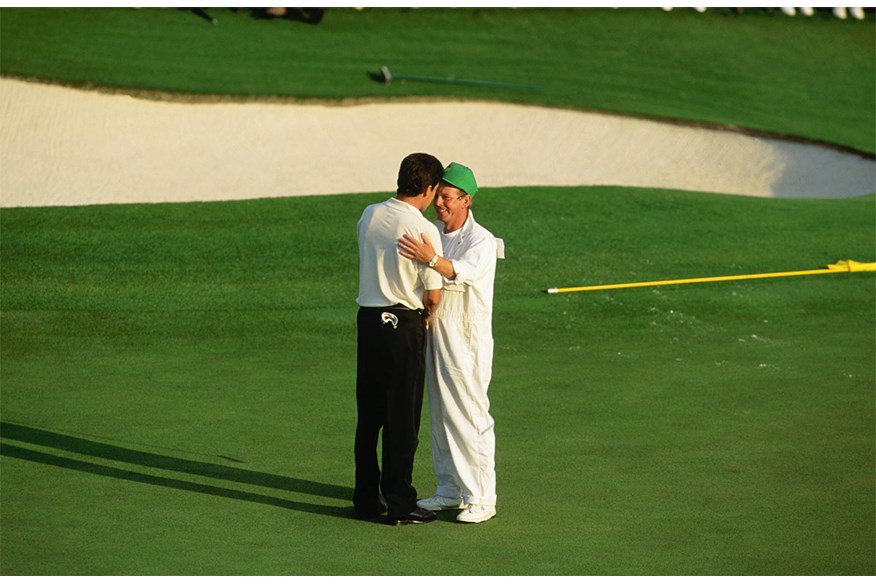
Olazabal may have dropped a shot on the penultimate hole, but still came to the 72nd hole with a one-shot lead. He made par, while Lehman settled for bogey. Initially, the overwhelming feeling was a sense of relief, a distinct departure from the jubilation he was expecting.
“The bogey on 17 affected me, but I had a little cushion and I stayed calm. And then, once I got to the 18th and everything was over, when I knocked that putt in and I knew I was the champion, I had a sense of relief.
“When you dream of winning a Major Championship, you think that it’s going to be a sensation of total joy and happiness.
“I thought I had worked really hard to win a Major. You never know whether you’re going to be able to win one, but you dream of that, and when it happens – in my case at least – it was a feeling of relief.”
THE MASTERS: Inside Augusta National’s clubhouse
After the presentation, media obligations and a dinner with members at the club – a tradition which was then part of becoming the champion – Olazabal headed back to his rented house to find a mass of people awaiting him, and decided not to immediately greet them.
Turning off the engine of his car, he stepped outside and sat on the bonnet, watching, reflecting on the day. His manager came outside, and Olazabal signalled for him to come and sit next to him, before posing a question about the surprising lack of emotion he had towards his greatest accomplishment.
“Is this it?,” Olazabal asked Sergio. “I just won the Masters, I don’t feel so full of happiness. Is this it?’ Sergio struggled to understand, perplexed. “What are you saying, you just won the Masters?”
That feeling would pass, and soon his life would veer in a direction that left him questioning whether he would ever play golf again, let alone dream of winning another Major…
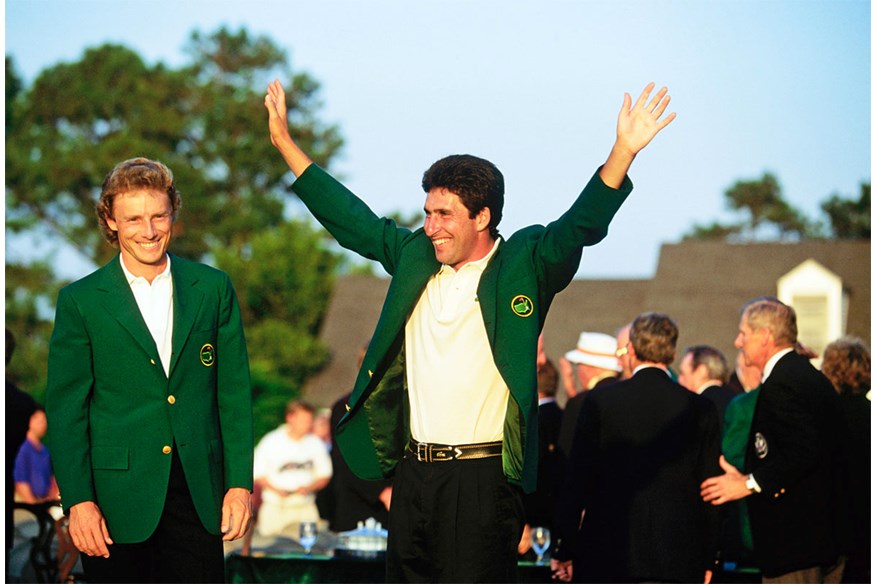
Masters 1999: “I was very conscious of how important that day was”
In September 1995 Jose Maria Olazabal withdrew from the Ryder Cup, suffering with a foot injury that led to an 18-month hiatus from the game. At his lowest point, he was unable to walk.
“To be totally honest, I thought my career was over. I wasn’t able to walk, I was in a lot of pain. Days went by, weeks went by, months went by with no positive signs. I watched golf, watched my peers playing tournaments and quite a few times I thought my career was over. I never thought of me being able to be in that situation, or achieving another Major like I did.”
There was a turning point, though, helped by a new doctor, medication and physiotherapy. He returned to the game in 1997, producing a comeback so successful it would have been impossible to predict. In just his third event, Olazabal was back in the winner’s circle.
THE MASTERS: The story of Tiger Woods’ historic 1997 win
“At one of the first tournaments I played at Las Palmas in Tenerife, I was able to win. I was in tears on 18, but at that time I didn’t think I was going to get back to where I was before all of this happened. I was very cautious about it, and I knew I still had a long road to be honest, physically and mentally. But it was a great boost to my confidence and my desire to keep on fighting.”
He finished 12th at the Masters that year, and recorded the same result in 1998. But when he headed to Augusta in 1999, his game hadn’t been as sharp as he’d like, and expectations were low.
“I got there and I was struggling big time with my driver. The rest of the game was in pretty good shape, the iron play was good, the short game was pretty good, but the driver, my god it was all over the park.”
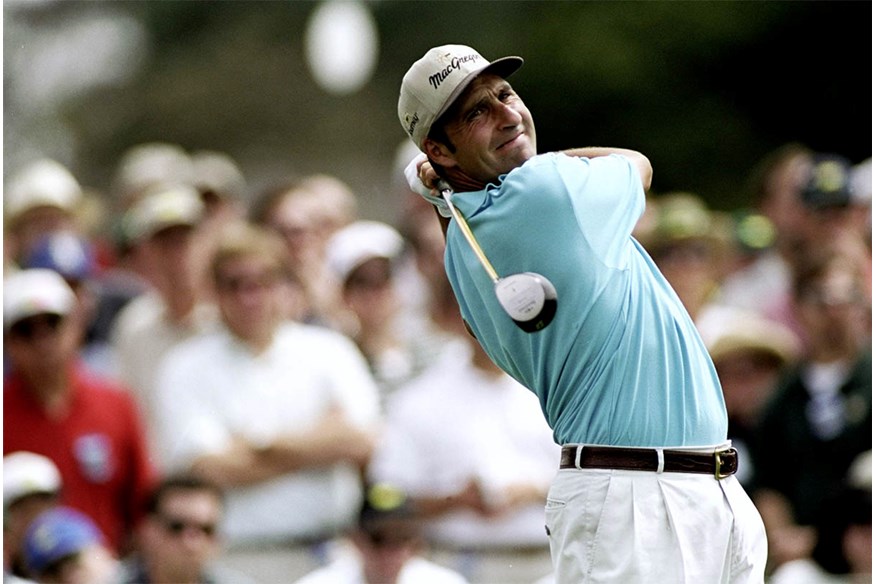
With his struggles off the tee, it could well have been a week to forget if not for two incidents early on in the week which changed his whole mindset. The first happened on Tuesday evening at the Champions’ dinner. Olazabal was with various others by the locker rooms, chatting and enjoying a drink when Gary Player came in and ushered him in to the locker room for a chat.
“He took me inside the locker room and he asked me ‘Compadre, how are you doing, how are things?’ and I said ‘Well Gary, everything is OK but I’m really struggling big time with my driver, I cannot hit the ball, I cannot put it in the park, it is just terrible.’
THE MASTERS: The story of Augusta National’s iconic caddies
“Gary Player being Gary Player, he pushed me against the lockers and he said ‘look at me’ with these huge open eyes. ‘Look at me! Look at me!’ “He hit his tummy four or five times ‘look at me, look at me, look at me. Strong like a bull. You have to believe. You have the game. You can win this again!’
Olazabal looked at Player, equally mesmerised and taken aback by his outburst. But they continued to talk, and Player left him with a poignant, parting sentiment: “Remember, you have to believe.”
The following day Olazabal went out for a practice round with Seve, and was once more disheartened by his failure to make any improvements with his driver. Realising his advice had worked once before, Seve decided to give a suggestion to his friend.
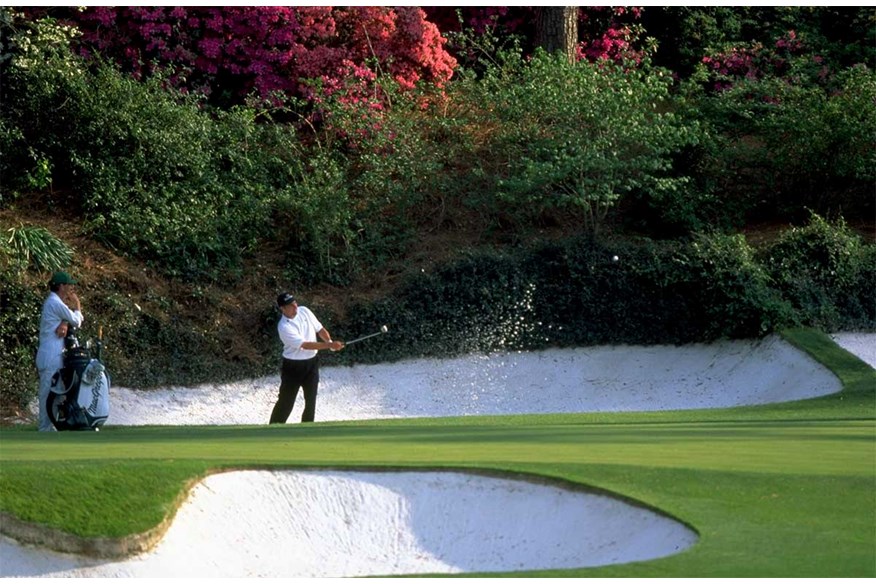
“Again, the driver was right, left, everywhere and Seve said ‘Jose, all you have to do is put the ball in play off the tee, the rest of the game is really good. Your iron play, your putting, everything is nice, so all you have to do is put the ball in play. Why don’t you slow down the back swing and don’t try to hit it hard just try to put the ball in play’. “I said ‘Seve, but…’ and he said ‘Yes, but do that, see how things go.’
“I went to the driving range, hit a few and I had a good session. I hit a few balls that way and the ball seemed to be reacting better and that’s what I did during the tournament.”
THE MASTERS: How a scorecard error cost one man Masters glory
Once again Olazabal struggled at the start of his opening round, but this time recovered for an opening two-under 70. He added a 69 to gain the 36-hole lead by three shots over Greg Norman (who had also overcome an injury) and a third round 73 still kept him ahead by one.
It set up for a final day battle between Olazabal and Norman, who was nursing scars of Masters gone by. It was no surprise to Olazabal that once more, as the case was in 1994, he wasn’t the crowd’s favourite, but he hadn’t expected to struggle so much early on.
“I didn’t start all that well. I bogeyed three, four and five, and all of a sudden I was behind. I remember saying to my caddie on six ‘we really have to do something quickly, we have to make a few birdies quickly’.”
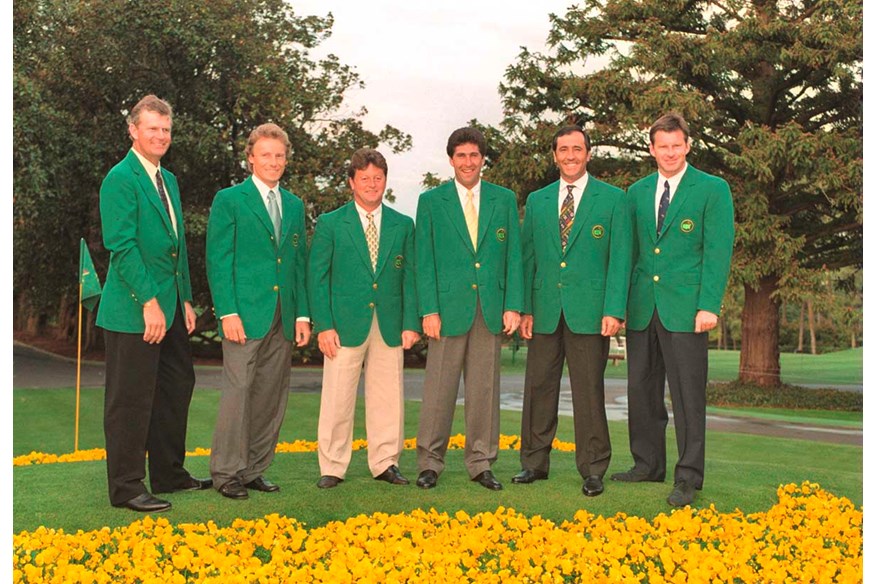
Fortunately for Jose, Norman was also struggling and had dropped to four-under for the tournament by the 5th hole. Olazabal regained possession of the lead with a birdie on six, and was joined at the top once more by Norman on the 8th. It looked like it could well be Norman’s day when he holed out from 30 feet for an eagle on the 13th, but Jose responded with a 25-footer for birdie to keep the pair locked at the top.
The miraculous moment lasted little longer for Norman, though, as back-to-back bogeys on the following two holes left him staring another Masters disappointment in the face. Up ahead, there was a big cheer on 16, and Olazabal could barely believe that Davis Love III was picking his ball out of the hole after chipping in for what looked to be an impossible birdie, moving him to within one shot of the lead.
THE MASTERS: With anonymity guaranteed, the caddies reveal all about Augusta
The 33-year-old answered with a birdie-two of his own when he nailed his approach to the same hole, giving him a two-shot cushion with as many to play. He went on to make a par despite playing from the trees on 17, leaving him able to enjoy the walk up the 18th. For Olazabal, the difference in how he felt about his victory compared to that of 1994, was ‘totally, completely different. Like night and day’.
“I really enjoyed every step that I took on that Sunday. I was more conscious of what was going on around me, the crowds. They were very loud but I really enjoyed that. The atmosphere, the electricity that was in the air, playing with Norman, it was fantastic for me.”
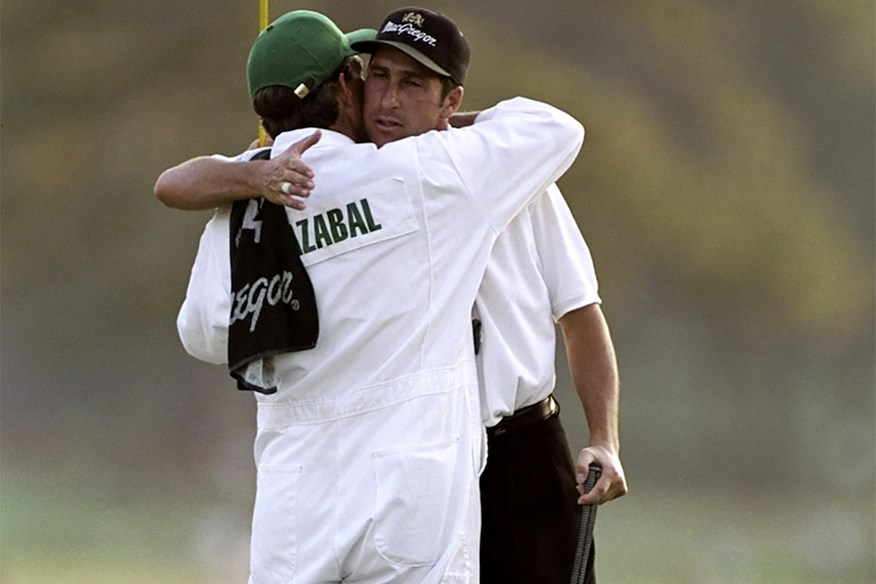
It’s evident that in the moment, Olazabal’s second Major victory was the more enjoyable. But which did he think was the more important, or more memorable? I posed that question, and he told me he didn’t think it was a fair one, because while they were different, it would be unfair to place one above the other in terms of importance.
“They were both important. I don’t think ’99 would have been as enjoyable if not for 1994, but it would be completely unfair for me to say that it was better than ’94.
THE MASTERS: Ben Crenshaw: “There’s not much strategy left at Augusta”
“In ’99 I was more conscious of what I had achieved. I knew then, how important and how huge it is to win a Major event and I really enjoyed every moment on the golf course and on the golf course that day.
It’s true that I couldn’t sleep that night, the adrenaline flow was still there, I was in total joy. I went back to the house, there were friends, Sergio with his wife, and we recalled all those moments on the golf course… 12, 13, 16, 17, 18… We were able to watch it on TV because they were playing it again. It was fantastic, I was very conscious of how important that day was.”
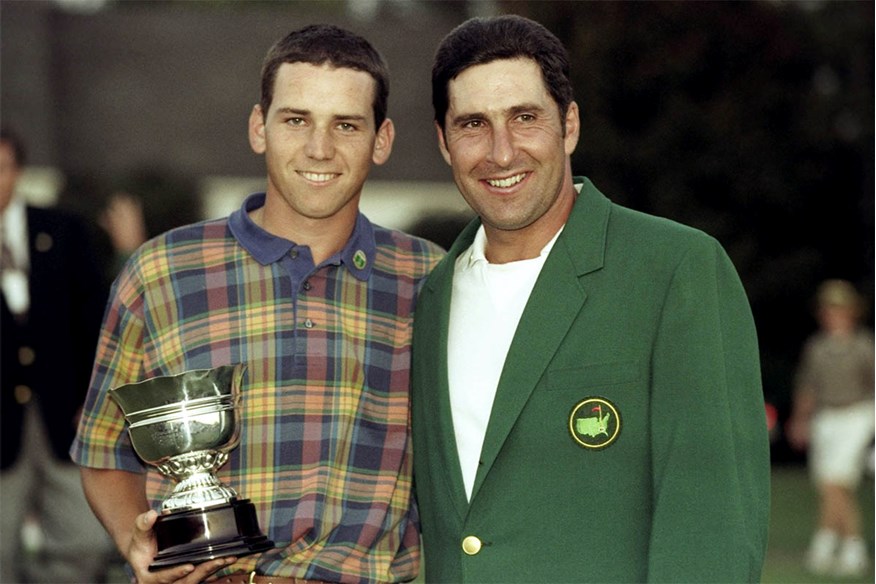
Where did Jose Maria Olazabal take the Green Jacket?
“I took it to a reception with the King of Spain, that was the highlight, in 1994. I never had the need to take it everywhere with me, it was more of a personal achievement, I didn’t have the need to show it to the world. I knew what I did, it was good enough for me. I took some pictures with my family, some friends, I went to the King’s reception and that was it.”
Why Seve’s note inspired Olazabal to message Sergio Garcia ahead of the final round in 2017
“It meant a lot to me and I thought it would help, or it could help Sergio in that final round. I knew how special it was for me to read that note before Sunday, and I thought it would be a nice gesture from me to Sergio to do so.”
-
 Jose Maria Olazabal won the Masters in 1994 and 1999.
Jose Maria Olazabal won the Masters in 1994 and 1999.
-
 Jose Maria Olazabal won the Masters in 1994 and 1999.
Jose Maria Olazabal won the Masters in 1994 and 1999.
-
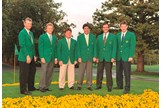 From 1980 to 1999 this group of European golfers won ten Masters titles between them.
From 1980 to 1999 this group of European golfers won ten Masters titles between them.
-
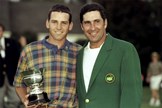 Sergio Garcia and Jose Maria Olazabal at the 1999 Masters.
Sergio Garcia and Jose Maria Olazabal at the 1999 Masters.
-
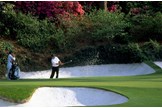 Olazabal escapes the Augusta sand on his way to victory at the 1999 Masters.
Olazabal escapes the Augusta sand on his way to victory at the 1999 Masters.
-
 Jose Maria Olazabal in front of Augusta's Azaleas at the 1994 Masters.
Jose Maria Olazabal in front of Augusta's Azaleas at the 1994 Masters.
-
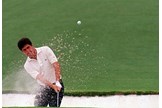 Olazabal escapes the sand at the 1994 Masters.
Olazabal escapes the sand at the 1994 Masters.
-
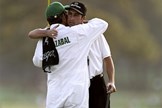 Jose Maria Olazabal celebrates victory with his caddie in 1999.
Jose Maria Olazabal celebrates victory with his caddie in 1999.
-
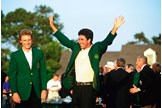 Olazabal celebrates winning his maiden Major at the 1994 Masters.
Olazabal celebrates winning his maiden Major at the 1994 Masters.
-
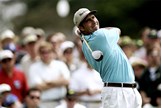 A tip from Seve Ballesteros helped Jose Maria Olazabal find more fairways at the Masters in 1999.
A tip from Seve Ballesteros helped Jose Maria Olazabal find more fairways at the Masters in 1999.
-
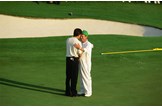 Olazabal shares a moment with his caddie after winning the 1994 Masters.
Olazabal shares a moment with his caddie after winning the 1994 Masters.
